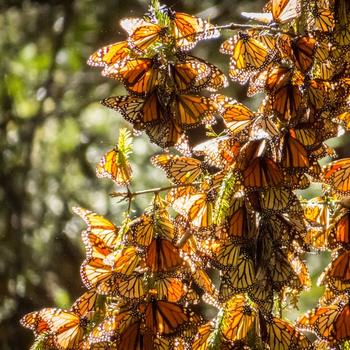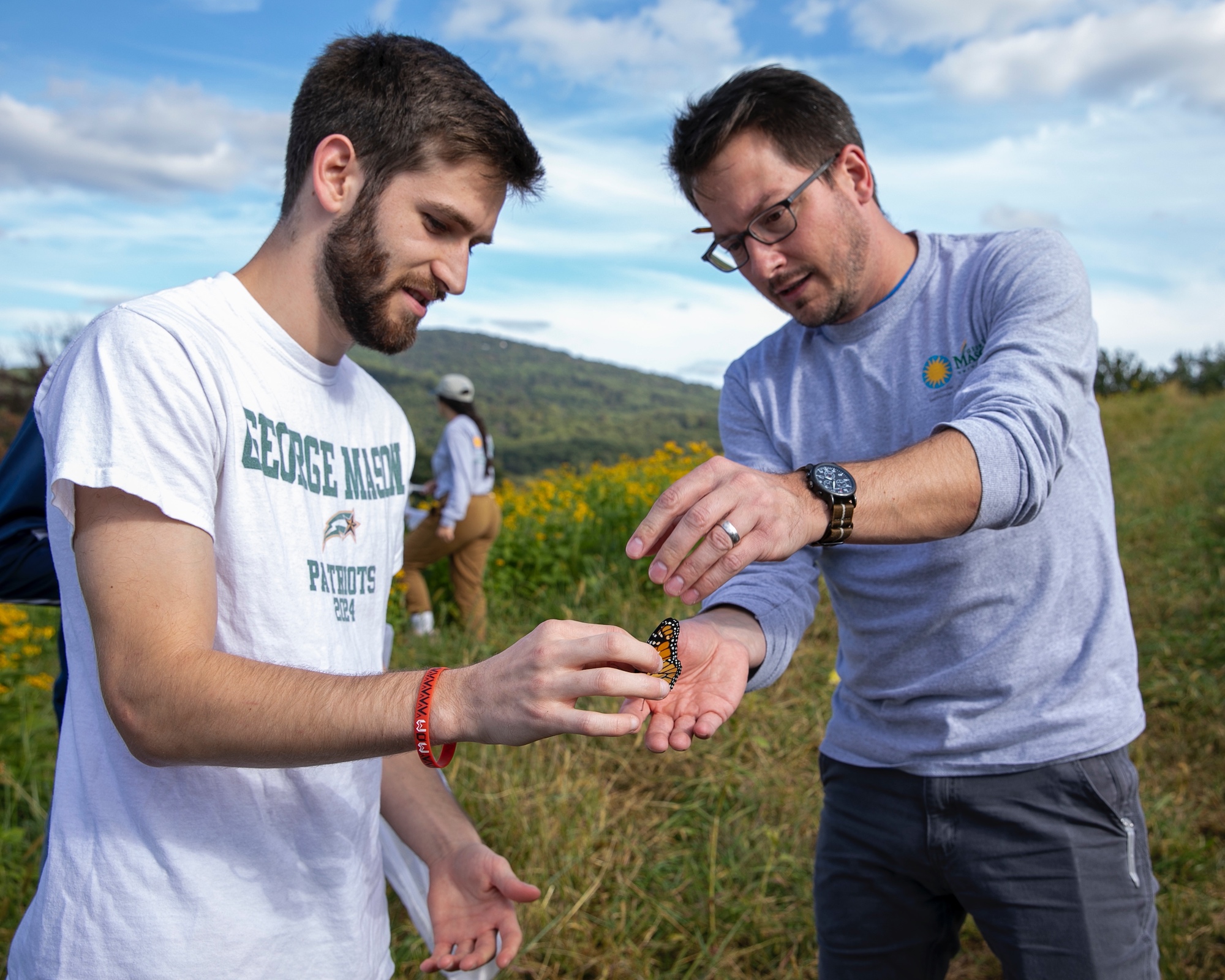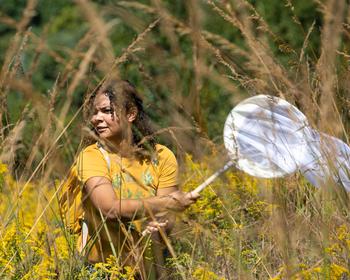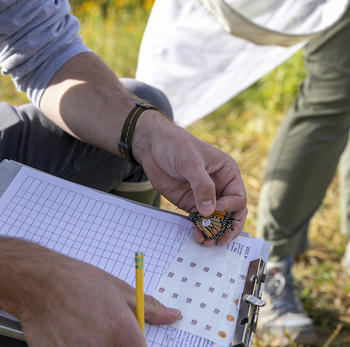
Many creatures migrate to warmer habitats for the winter, but no insect does so quite as uniquely and spectacularly as the monarch butterfly.
From the United States and Canada, tens of millions of monarchs fly each year to a place they—and the previous butterfly generation before them—have never been before: tall trees found in a few mountain forests in central Mexico. Their tiny wings can take them on a roughly 2,500-mile transcontinental journey to these beautiful butterfly sanctuaries.
Protecting an Endangered Species
In late September, 18 undergraduates from the Smithsonian-Mason School of Conservation‘s (SMSC) Wildlife Ecology and Conservation program tagged monarch butterflies on their journey south to help researchers better understand their grand migration.
“It’s important to track [their movement] because monarchs are listed as an endangered species as of this summer [by the International Union for Conservation of Nature],” said senior environmental and sustainability studies major Nadia Gray.
Gray, who said she previously volunteered with the Norfolk Botanical Garden as a butterfly docent, is attending her second semester at SMSC. The Virginia Beach native said monarchs are facing threats including habitat loss, air pollution, and climate change.
According to the nonprofit citizen-science program Monarch Watch, tagging also helps answer questions about the origins of monarchs that reach Mexico, the timing and pace of their migration, factors that impact their survival rates, and more.

Elusive Flyers
Using aerial nets with a delicate fabric to protect the butterflies, the students spent two afternoons in the fields at SMSC’s Front Royal campus to capture the fluttering insects.
On the second afternoon, the students caught three monarchs and placed sticker-like tags with serial codes on the butterflies’ hind wings.

Even with many people, catching monarchs can be difficult. On the group’s first afternoon in the field, they were slightly ahead of most monarchs’ migration. The very few monarchs they did see were too swift to catch.
Still, the group learned more about butterflies and caught, identified, and released nine other butterfly species, including whites and sulfurs, and the common buckeye.

On the second day in the field, the butterflies were also difficult to catch because of the wind, but students like senior environmental science major Spencer Harman were determined to succeed. That kind of determination is central to the Mason experience, which challenges us to show up ready to work that much harder in our quest to solve problems through critical actions and research.
“More likely than not, [the monarchs] were actually in the trees,” said Harman, who caught one that dropped out of a tree in front of him.
The Place for Aspiring Conservationists
Being in the field for experiential learning is one of the highlights of Harman’s SMSC experience, he said.
“I’ve been interested in SMSC since high school and now that I’m here, it’s really interesting how specific we can get into the field of conservation,” said Harman, who grew up in Gainesville, Virginia.
Gray agreed.
“It’s just a good place to come if you need to get your foot in the door in the world of conservation, or if you want to make those connections with people that are working for, say, the Smithsonian or Virginia Working Landscapes.”
It’s a rewarding experience for professors, too.
“The thing I enjoy most about being here at SMSC is just the unique opportunities we have from an educational perspective,” Davis said.
“The student engagement is really fantastic,” he added. “It’s a self-selected group, and they’re really, really interested in this sort of thing. It makes teaching a lot of fun.”
Related News
- August 9, 2023
- July 27, 2023
- July 13, 2023
- May 8, 2023
- April 4, 2023
